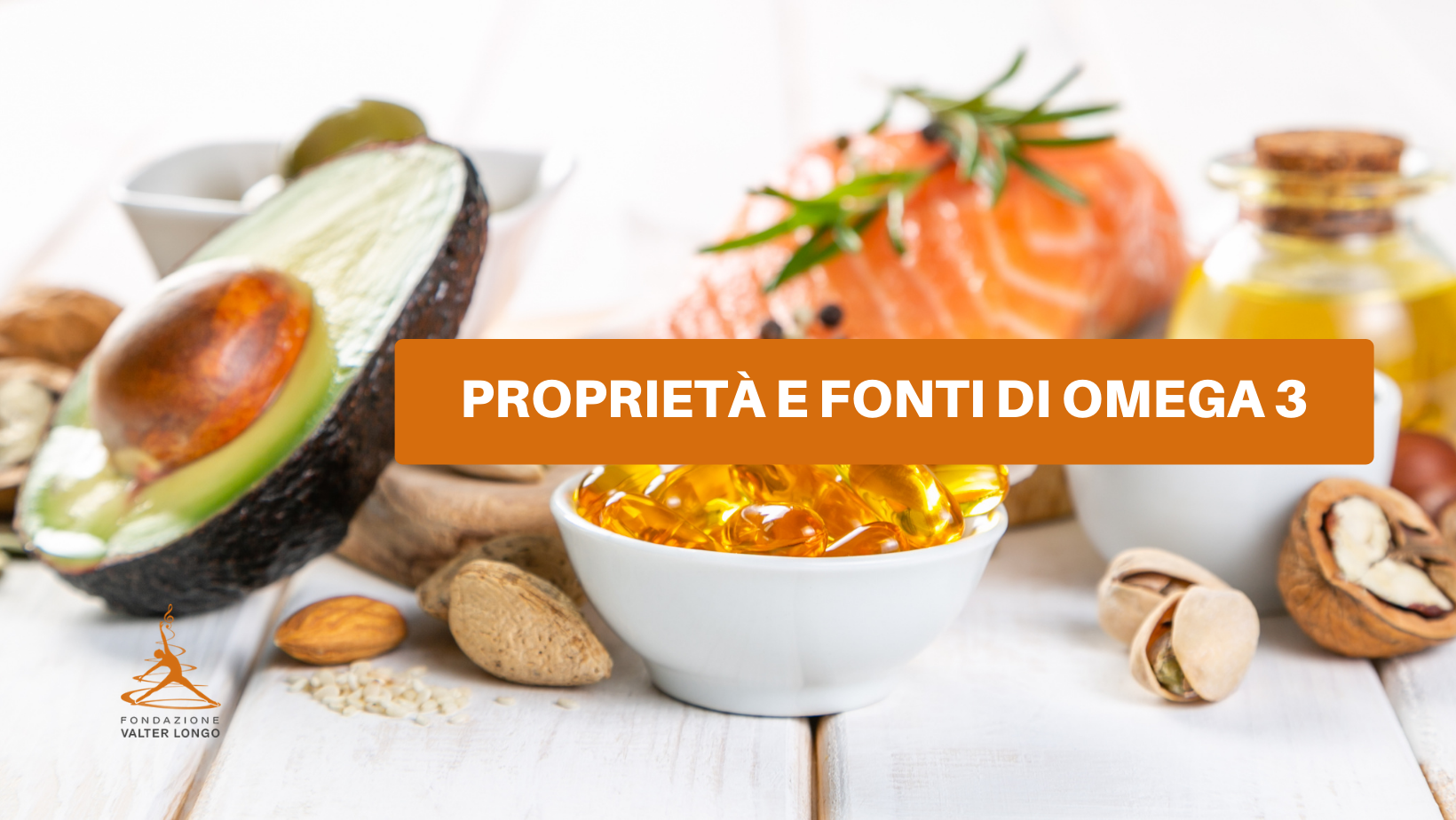
Long-chain polyunsaturated fatty acids are divided into two categories: omega 3 and omega 6 fatty acids. They are classified according to their chemical structure and the position of the last double bond: omega 3 fatty acids on the third carbon atom, and omega 6 on the sixth carbon atom.
WHAT ARE THE OMEGA 3 FATTY ACIDS?
They are defined as essential fatty acids since our body is not able to synthesize them, however, they are necessary for important physiological functions and must thus be consumed through food. Omega 3 and omega 6 fatty acids undergo different metabolism, with distinct biochemical pathways since they cannot be transformed into each other. The precursors of omega 3 and omega 6 essential fatty acids are alpha-linoleic acid (ALA) and linoleic acid (LA) for omega 6, respectively. Their mechanism of action is based on the transformation into biologically active substances, eicosanoids, which are further split into three molecular categories: leukotrienes, thromboxanes, and prostaglandins. The main derivatives of alpha-linoleic acid are EPA (eicosapentaenoic) and DHA (docosahexaenoic acid).
FUNCTIONS OF OMEGA 3 FATTY ACIDS
Omega 3 fatty acids play an important role in various physiological functions, and impact different systems of the body. Essential fatty acids, for example, are fundamental components of plasma membranes because they favor fluid and elastic environments and improve endothelial function. For this reason, they are important for healthy skin, especially in the case of dermatological problems like dermatitis and psoriasis. In addition, they also play an important role in the health of the retina and the reproductive system. Furthermore, omega 3s are essential for the development of the nervous system in the embryo, growth, and brain function. They can even reduce the onset of depression and prevent mild senile dementias and Alzheimer’s disease.
At the cardiovascular level, they have shown beneficial effects in regulating blood pressure and heart rhythm, as well as elasticity to the walls of blood vessels. In addition, they have an anti-platelet aggregation action, reducing the formation of clots due to atherosclerotic plaques, and thus decreasing the risk of thrombosis. They also limit the levels of triglycerides and bad cholesterol (LDL), and they can prevent cardiovascular disease. Omega3s are particularly useful in combating inflammatory states and autoimmune diseases such as Rheumatoid arthritis, Ulcerative colitis, and Chron’s disease. However, they have been shown to reduce the risk of chronic diseases, such as diabetes and cancer.
WHICH FOODS CONTAIN OMEGA 3 FATTY ACIDS?
Vegetables mainly contain omega 3 ALA, which are found mainly in dried fruit (walnuts, almonds, and cashews), seed oils (linseed, chia, sunflower, and pumpkin), in their respective vegetable oils (particularly concentrated in linseed oil), as well as in soybean oil and extra-virgin olive oil. Other vegetable sources of omega 3 are legumes, such as soy, cannellini, and broad beans, and plant-based drinks like almond and oat milk.
Foods of animal origin, on the other hand, contain long-chain omega 3 EPA and DHA. They are concentrated in the fat of blue fish that live in cold waters (herring, halibut, mackerel, cod, salmon, sardines, tuna, swordfish, anchovies, sole, plaice) and also fish from lakes and streams such as trout, and whitefish. A good amount of fatty acids is also present in shellfish (mussels, oysters, scallops, and octopus), and crustaceans (lobster, shrimp).
WHAT HAPPENS IN THE CASE OF OMEGA 3 DEFICIENCY?
The daily requirement of EPA and DHA is 250 mg per day; but symptoms associated with essential fatty acid deficiency are varied. In children they can cause growth problems, hyperactivity, and behavioral issues, including Attention Deficit Hyperactivity Disorder (ADHD). In adults, skin rashes, inflammatory states, cardiovascular disorders, and other chronic-degenerative diseases. In the case of deficiency, it is recommended to take food supplements in the form of gels containing cod liver oil, sardine, or salmon oil, always under medical supervision or with the help of a nutritionist.
>>> For further scientific information about a healthy lifestyle and healthy eating habits, visit the CREATE CURES FOUNDATION AND FONDAZIONE VALTER LONGO websites, where you will also find several publications of clinical studies.
SOURCES: